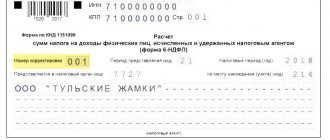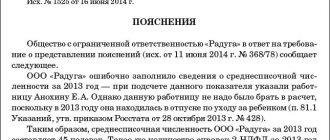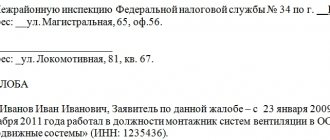Information on income tax is reflected by tax agents in 2-NDFL certificates and 6-NDFL calculations. These two forms are related. For verification, control relationships are used - intra-document and inter-document. What to do if discrepancies are found between 6-NDFL and 2-NDFL? In what cases is this considered an error, and in what cases is it considered normal? Let's look into the issue.
Read: Control ratios 2-NDFL and 6-NDFL
Consultant Plus
Try it for free
Get access
Important information about deadlines and filling rules
IMPORTANT!
In 2021, the deadlines for submitting annual income tax reports have been changed: submit information by 03/02/2020.
The forms should indicate all types of income accrued in favor of individuals under employment and civil law contracts. Also reflect income from fixed-term and seasonal contracts.
Step-by-step instructions for compiling 6-NDFL for 2021 are disclosed in a separate article “How to fill out the updated Form 6 NDFL. Complete Guide."
Rules for preparing annual reports on personal income tax are in a separate material “Certificate 2-NDFL: form, codes and due date.”
The completed form 2-NDFL should be submitted to the Federal Tax Service no later than March 1 of the year following the reporting year. In 2021 this is a day off, report by 03/02/2020.
Quarterly report 6-NDFL - until the 30th day of the first month following the reporting quarter. It should be taken into account that if the deadline for provision falls on a weekend or a non-working holiday, then the deadline is transferred to the first working day (Article 6.1 of the Tax Code of the Russian Federation). Submit your year-end calculations by 03/02/2020.
How to reflect salary payments in 6-NDFL
On April 3, the employee was paid his salary for March 2021 - 50,000 rubles. How to reflect this in 6-NDFL?
Personal income tax should be transferred from wages for March in April, but this is a different quarter.
Therefore, there is no need to reflect the transfer of personal income tax in the second section of the report for the first quarter, but in the first section, line 020, you need to reflect 50,000. We fill out the second section of the report for the first half of 2021 as follows:
in the line “Date of actual receipt of income” we write “March 31, 2019”; in the line “Tax withholding date” - April 3, 2021; in the line “Tax payment deadline” - April 4, 2021; in lines 130 and 140 we indicate the amounts of 50,000 and 6,500 rubles.
More information on how to fill out 2-NDFL and 6-NDFL is described in the article “New reporting forms 6-NDFL and 2-NDFL”.
The tax agent paid the employee the salary arrears for November 2018 in April 2021. The amount was 50,000 rubles. How to reflect this in 6-NDFL?
The first thing to do is to send to the tax authority an updated 6-NDFL calculation for 2021 with information about accrued income for line codes 020 and 040.
Then you need to submit an updated certificate for 2021, reflecting income for November in the amount of 50,000 rubles. We fill out the second section of the 6-NDFL calculation for the first half of 2021 as follows:
in the line “Date of actual receipt of income” we write “November 30, 2018”; in the line “Tax withholding date” - April 8, 2021; in the line “Tax payment deadline” is April 9, 2021.
Please note: if the deadline for tax remittance falls on a weekend, the payment deadline is moved to the next working day. This rule does not apply to the date of actual receipt of income.
For example, employees were paid salaries for September 2021 on Friday, October 12. The employer must transfer tax on these amounts to the budget no later than the day following the day the salary is paid. This operation should be reflected like this:
line 100 - September 30, 2021; line 110 - October 12, 2018; line 120 - October 15, 2021.
How to reflect income in kind in the calculation of 6-NDFL, read the article “How to fill out 6-NDFL for popular questions.”
The external student transfers 2-NDFL certificates from the previous period, selects rates and income codes and performs calculations based on the entered data.
Try for free
General rules for reconciliations
The Federal Service has developed an algorithm for checking 2-NDFL and 6-NDFL for 2021 for its territorial branches. That is, uniform recommendations are intended to identify errors by inspectors when reconciling submitted reports. But not only controllers have the right to use the recommendations.
All taxpayers have the right to check their reporting forms for compliance with the control ratios. This approach to reporting will help avoid mistakes.
All information was presented in the form of a separate letter from the Federal Tax Service of Russia dated March 10, 2016 No. BS-4-11/ [email protected] The final reconciliation of 6-NDFL and 2-NDFL in 2021 is included in a separate appendix to this letter. The information is presented in the form of a table that contains:
- type of reference ratio;
- a reference to the norms of fiscal legislation that may have been violated;
- a detailed statement of the error, violation or discrepancy;
- recommendations for the inspector (what actions to take in relation to the taxpayer).
IMPORTANT!
The use of control ratios for checking reporting forms is not mandatory for tax agents. But reconciliation of individual indicators will allow you to avoid claims from controllers.
Simple math
To calculate the amount of tax, the income received for a certain period is multiplied by the tax rate, and, in the vast majority of cases, the resulting final value will not be an integer, and will contain numbers after the decimal point.
Since the tax indicator is reflected in whole rubles, the amount resulting from the calculation is rounded. Rounding of the accrued amount, in accordance with clause 6 of Art. 52 of the Tax Code of the Russian Federation, is carried out according to the classical mathematical rule: if the value of kopecks (digits after the decimal point) is less than 50, the kopecks should be discarded; if the resulting result after the decimal point forms the value “50” or higher, fractional signs are rounded up to the whole number ( up to a full ruble).
Let's look at examples:
- The initial amount of income is 48,372 rubles. With a tax rate of 13%, the result of the calculations will be 6,288.36 rubles. (48,372 x 13%), and the tax amount is 6,288 rubles. The 36 kopecks received during the calculation are discarded in this case.
- Income of an individual – 54,904 rubles. We multiply by the tax rate of 13%, the total will be 7,137.52 rubles. (54,904 x 13%), and as a result of rounding the indicator, the tax is equal to 7,138 rubles. The 52 kopecks formed as a result of a mathematical operation are rounded to the nearest ruble.
Personal income tax is also transferred in full rubles without kopecks.
Indicators to check
To check the indicators of fiscal reporting, a special table of control ratios of 6-NDFL and 2-NDFL for the year is provided. Use the recommendations of the Federal Tax Service to verify and eliminate errors:
| What to check (ratio type) | What was violated (link to legal acts) | What kind of error (wording) | What to do (controller actions) |
| Equality of the sum of the lines “Total amount of income” with attribute 1 for all taxpayers from forms 2-NDFL and 6-NDFL 2021 on line 020. | Art. 126.1, Art. 226, Art. 226.1, Art. 230, Art. 23, Art. 24 Tax Code of the Russian Federation | The amount of income is underestimated or overestimated. Line 020 of the calculation and line “Total amount of income” of the certificate for the corresponding income tax rate contain information about all accrued income in favor of individual taxpayers. The discrepancy between these indicators indicates that income was overestimated or underestimated when reporting. | When identifying discrepancies in these indicators, the inspector is obliged to send a corresponding notification to the tax agent (Article 88 of the Tax Code of the Russian Federation). The notice requires clarification or corrective reports to correct errors. If explanations or adjustments were not provided by the tax agent, and the reporting data reveals a violation of fiscal legislation, then the controller is obliged to draw up an audit report (Article 100 of the Tax Code of the Russian Federation). |
| Line 025 of the calculation and the amount of income with code 1010 (dividends) for all taxpayers (sign 1) from the certificate are equal. | The amount of accrued income in the form of dividends is underestimated or overestimated. Determined when there is a discrepancy between these indicators. | ||
| The indicator for line 040 of the calculation is equal to the sums of the lines “Calculated tax amount” from the certificate for the corresponding tax rate. | The calculated tax amount is underestimated or overestimated. The indicator from the certificate is defined as the sum of the indicated lines for all taxpayers with characteristic 1 at the corresponding income tax rate. | ||
| The value of line 080 is equal to the sum of the lines “Tax amount not withheld.” | If a discrepancy between 2-personal income tax and 6-personal income tax is identified based on this indicator, we can conclude that the amount of tax not withheld by the tax agent is underestimated or overstated. The indicator from the certificate is defined as the sum for all taxpayers, taking into account characteristic 1 at the corresponding tax rate. | ||
| The value of line 060 of the calculation is equal to the total number of certificates. | Art. 126.1, Art. 230, Art. 23, Art. 24 Tax Code of the Russian Federation | The number of individuals receiving income does not correspond. Take into account the number of annual certificates for all taxpayers with attribute 1. |
If the data differs between 2-NDFL and 6-NDFL: what to do?
I. I. Grechenko author of the article, Ascon consultant on accounting and taxation
The 6-NDFL calculation submitted to the tax authority is automatically checked against control ratios (Letter of the Federal Tax Service of Russia dated July 16, 2013 No. AS-4-2/12705 (clauses 1, 2, clause 2.4)). Therefore, before sending the calculation to the tax authority, you should check it yourself.
If you have correctly filled out the 6-NDFL calculation, you do not have the right to require any additional documents (clause 7 of Article 88 of the Tax Code of the Russian Federation). In this case, the tax authority conducts an audit on the basis of the documents it has, and a desk audit report is not drawn up (clause 5 of Article 88 of the Tax Code of the Russian Federation). The inspection is considered completed after three months.
If there are errors or contradictions with 2-NDFL and other reporting in the calculation of 6-NDFL, the tax authority has the right to demand from you an explanation or correction of the calculation, and you must send explanations or correct the report within five working days (clause 6 of article 6.1 , clause 3 of article 88 of the Tax Code of the Russian Federation).
When checking the control ratios of 6-NDFL and 2-NDFL, the most important thing is to reconcile the relationship between the data in the forms themselves and the tax determined by calculation.
How to check 6-NDFL and 2-NDFL?
Control ratios for the year are checked on the following points:
- Line 020 of the 6-NDFL calculation for each rate should be equal to:
the sum of lines “Total amount of income” of 2-NDFL certificates at the same rate + the sum of lines 020 of Appendix 2 to the income tax return at the same rate.
If the condition is not met, check whether you have reflected all income at each personal income tax rate in three reports. Add what was missing, delete what is superfluous, or submit updated reporting, correcting the error if necessary.
- Line 025 of the 6-NDFL calculation should be equal to:
the amount of dividends in section. 3 according to income code 1010 certificate 2-NDFL or
for JSC – the amount of dividends according to income code 1010 of Appendix 2 to the income tax return.
If equality is violated, check whether you have reflected all dividends paid and whether there are any omissions.
- Line 040 of the 6-NDFL calculation for each personal income tax rate should be equal to:
the sum of the lines “Tax amount calculated” in section. 5 at the same rate of certificates 2-NDFL + the sum of lines 030 of Appendix 2 to the income tax return at the same rate.
If the equality is violated, check whether the personal income tax amount was calculated correctly at a specific rate, whether personal income tax was calculated on all incomes, correct errors in income and deductions, including arithmetic ones.
- Line 060 of the 6-NDFL calculation should be equal to:
number of 2-NDFL certificates with attribute 1 + number of Appendices 2 to the income tax return.
Check whether citizens were counted correctly in all reports and whether there are any omissions or duplicates.
- Line 080 of the 6-NDFL calculation should be equal to:
the amount of the lines “Amount of tax not withheld by the tax agent” section. 5 certificates 2-NDFL + sum of lines 034 of Appendix 2 to the income tax return.
Check whether the reports correctly calculated the amount of personal income tax that was not legally withheld.
If you do not comply with these control ratios, then if you receive a request from the tax authority for explanations, you must find out the reason for the discrepancies:
- there is an error, in this case it is necessary to make changes in the reporting and send an adjustment report in form 6-NDFL with the correct data,
or
- the discrepancy is due to the presence of certain objective reasons; in this case, it is enough to send an explanation of the identified discrepancy to the tax authority.
For example, the most common situation is when wages were accrued in December 2021, but were actually issued in January 2018. Accordingly, personal income tax was also withheld in January.
The amount of tax withheld from the December salary will not be included in the calculation of 6-NDFL for 2021. This amount must be indicated only in section 1 on line 040 “Amount of calculated tax.” In line 070 “Amount of withheld tax,” personal income tax from December income will be taken into account only in the first quarter of 2021.
The situation with 2-personal income tax is slightly different. The certificate must reflect the withheld personal income tax for the tax period for which the tax was calculated. That is, the tax withheld from income accrued in December will also be included in 2-NDFL for 2021. By the way, if the tax agent withheld personal income tax after the end of the tax period (year) and after submitting 2-NDFL certificates to the Federal Tax Service, then he will have to submit adjustments.
As a result, we see that the tax amounts reflected in the annual reports of 6-NDFL and 2-NDFL differ. And this is not a mistake.
The question arises: is it possible for the tax authority to refuse to accept a report in Form 6-NDFL due to failure to comply with control ratios?
To answer this, let us turn to the provisions of tax legislation, which tax authorities are obliged to strictly comply with.
Provisions of paragraph 4 of Art. 80, art. 230 of the Tax Code of the Russian Federation, prescribe mandatory compliance with the form (format) and procedure for submitting the calculation of personal income tax amounts. Refusal to accept the calculation of personal income tax amounts is possible in the following cases:
- failure to comply with the established form (established format) for calculating personal income tax amounts;
- submission by a tax agent of a calculation of personal income tax amounts to a tax authority other than the place of registration.
Also, the grounds for refusal to accept a tax calculation are listed in clause 28 of the Administrative Regulations of the Federal Tax Service, approved by Order of the Ministry of Finance of Russia dated July 2, 2012 No. 99n:
- the absence of identification documents of an individual, or the refusal of an individual to present such documents to an official providing a public service in the event of a tax return (calculation) being submitted directly by this person;
- the absence of documents confirming the authority of an individual - an authorized representative of the applicant to submit a declaration (calculation) or confirmation of the accuracy and completeness of the information specified in the declaration (calculation), or the refusal of the specified person to present such documents to the official;
- submission of a declaration (calculation) not in the established form (established format);
- absence in the declaration (calculation) submitted on paper, the signature of the head (other representative - an individual) of the applicant organization (individual - applicant or his representative), authorized to confirm the accuracy and completeness of the information specified in the declaration (calculation), the seal of the organization ;
- absence of an enhanced qualified electronic signature of the head (other representative - individual) of the applicant organization (individual - applicant or his representative) or discrepancy between the data of the owner of the qualified certificate and the data of the head (other representative - individual) of the applicant organization (individual - applicant or his representative) representative) in the declaration (calculation) if it is submitted in electronic form using the TKS;
- submission of a declaration (calculation) to the Federal Tax Service, whose competence does not include the acceptance of this tax declaration (calculation).
As we see, tax authorities do not have the right to refuse to accept reports on the basis of non-compliance with control ratios.
Conclusions:
- If you do not comply with these control ratios, then if you receive a request from the tax authority for explanations, you must find out the reason for the discrepancies.
- If there is an error, in this case it is necessary to make changes in the reporting and send an adjustment report in Form 6-NDFL with the correct data.
- If the discrepancy is due to the presence of objective reasons, in this case it is enough to send an explanation of the identified discrepancy to the tax authority.
- Tax authorities do not have the right to refuse to accept reports on the basis of non-compliance with control ratios.
More on the topic
You will find up-to-date information on personal income tax in the Guide How to submit personal income tax reports to a tax agent
How to reconcile 2-NDFL with 6-NDFL calculation
“Income” certificates 2-NDFL are submitted to the Federal Tax Service when the reporting year ends (we are talking about certificates with attribute “1”), and reports 6-NDFL are submitted quarterly in increments from the beginning of the reporting year. It is clear that 2-NDFL can only be correlated with annual 6-NDFL, and it will not be possible to compare these forms with each other quarterly.
How to fill out a 2-NDFL certificate taking into account the control ratios and 6-NDFL? The main difference between the forms is as follows: 2-NDFL are filled out for the entire year individually for each individual who received income, and form 6-NDFL contains already generalized information about income, deductions and taxes for the reporting period.
Read also: Filling out 6-NDFL for the 1st quarter of 2021: form and sample filling
To date, new control ratios for 2-NDFL and 6-NDFL have not yet been adopted. An example of existing interconnections is contained in the letter of the Federal Tax Service of the Russian Federation dated March 10, 2016 No. BS-4-11/3852. These are ratios for calculating 6-NDFL, intended both for checking internal indicators and for comparing calculation data with other forms, including 2-NDFL. The indicated inter-document relationships should be used to compare the indicators of the 2021 reports.
Before we look at where 2-NDFL and 6-NDFL should converge, let us recall that 6-NDFL includes two sections: the first collects generalized indicators on a cumulative basis, in the second data is indicated for the last 3 months. Only section 1 of the calculation is compared with 2-NDFL. The tax rate at which the reconciliation is carried out must also be taken into account if personal income tax was levied at different rates: in section 1 of the 6-personal income tax calculation, the indicators in lines 020-050 refer to a specific rate in line 010, and 060-090 summarize the indicators for all applicable personal income tax rates.
Report form 6-NDFL
The report on financial information 6-NDFL is submitted to the federal tax authorities within the established time frame. You can find a sample form and instructions for filling it out on the Unified Portal of State Regulations. The first reporting on this form was submitted for the 1st quarter of 2017. At the same time, no one has abolished the declaration in form 2-NDFL, so it also needs to be submitted to the tax authorities.
All companies, enterprises and individual entrepreneurs that used the services of hired workers during the reporting period must submit 6-NDFL reports to the fiscal service. At the same time, 6-NDFL is filled out not for a specific employee, but for the entire enterprise as a whole, and contains total information about the income people received during the year.
Control ratios of 6-NDFL during logical testing
The relations used for logical testing constitute 1 group. These include KS:
- 1.1 - checking the date of submission of the report for compliance with the established deadline. An identified delay immediately causes the drawing up of a violation report.
For information about the deadlines that should be adhered to when submitting the report, read the material “Deadlines for submitting the 6-NDFL report .
- 1.2 - the amount of accrued income (line 020) cannot be less than the amount of deductions (line 030). This indicates an unreasonable overestimation of deductions.
- 1.3 - the amount of tax calculated at the appropriate rate (line 010) (line 040) must arithmetically correspond to the basis for its calculation (the difference between lines 020 and 030). Deviations from it are acceptable, not exceeding 1 rub. for each person with each payment of taxable income.
- 1.4 - the amount of the accrued tax (line 040) cannot be less than the amount of the fixed advance payment for it (line 050). If this is the case, then there is an error in calculating the amount of the fixed advance.
In addition, the tax payment data available at the Federal Tax Service will be verified, and here the following KS, forming group 2, will attract attention:
- 2.1—the volume of tax payments received into the budget cannot be less than the difference between the amount of personal income tax actually withheld (p. 070) and the amount of tax returned to the taxpayer (p. 090). If this is present, it indicates incomplete transfer of payments to the budget.
- 2.2 - compliance of the dates of actual payments with the dates indicated as the deadline for transferring taxes (page 120). Payments made later will indicate a violation of the payment deadline.
You can check the report line by line with the help of explanations from ConsultantPlus experts. If you do not have access to the K+ system, get a trial online access for free.
Whether late payment of personal income tax always threatens with a fine, find out from this publication.
Let's consider the control ratios of 6-NDFL and 2-NDFL and profit declaration.
Correlation of two reports
In the 1st quarter of 2021, a column was added to the report - “Income deductions”. It reflects data that ensures the return of part of the income paid to the budget. After filling out a particular form, the accountant must check it and make sure that the figures reflected in it are correct and reliable.
The due dates for each of the two reports are the same. They must be submitted to the tax authorities no later than April 1 of the year following the reporting year. If the due date falls on a weekend, then in accordance with the Labor Code it is postponed to the next working day. Considering that April 1, 2021 falls on a Saturday, the financial report can be submitted on April 3 of the current year.
Control ratios
Each type of reporting allows the use of control ratios. This term refers to the correspondence of the numeric data of a certain row to the total value of other rows. In some cases, reconciliation takes place according to the “more or less” principle: it is important that the numbers entered in one column are more or less than the data indicated in other sections.
The control ratios applied to 6-NDFL require reconciliation between the 2-NDFL and DAM forms. In addition, representatives of the tax office carry out an audit based on a comparison of data inside the form.
In June 2021, the Federal Tax Service updated the formulas used for reconciliations. Most of the checkpoints are the same as previous versions. According to the rules of the new edition, the inspector will take into account the report even without the necessary correlation between the lines. The reason for refusal to accept Form 6-NDFL may be:
- discrepancy in the amounts of contributions in section 1;
- discrepancy between the amounts of contributions under section 3.
In order not to waste time on preparing corrective statements, you must first pay attention to these sections and check the report according to the established formulas.





